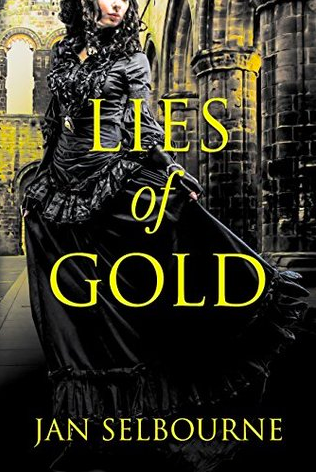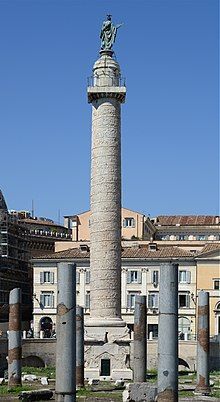Mary Anne Yarde's Blog: The Coffee Pot Book Club , page 142
April 25, 2019
#BookReview — The Moss Maiden of Kinderhook by Mark C. King #HistoricalFiction #HistoricalMurderMystery @MarkCKingAuthor

The Moss Maiden of KinderhookBy Mark C. King

Kinderhook, New York - 1826
If monsters are real, then anything is possible.
Like all his peers, seventeen-year-old William Sharp grew up hearing fairy tales about the Moss Maiden, a folklore creature that rewards the good and punishes the wicked. But those were just stories to scare children…weren’t they?
Then why are people dying? What is haunting the forests of Kinderhook Village?
Though frightened and overwhelmed, William will uncover secrets that will call on him to do more than he could imagine. He’ll have to contend with horrors beyond his most disturbing dreams.
For the sake of his family, the girl he loves, and his very life, William will have to face the nightmare that is the Moss Maiden of Kinderhook!

“We are dealing with a deadly monster and only the truth — pleasant or not — will help you defeat it.”
Seamus MacGowan’s words may not be what the inhabitants of Kinderhook wanted to hear, but someone needs to speak plainly about what they are dealing with, and he is, after all, a monster hunter. Seamus knows that the Moss Maiden would never kill indiscriminately — she only targets the wicked.
Until a few days ago, William Sharp’s only concern was how to tell his parents that he had no intention of becoming a lawyer or a doctor. Instead, he felt a calling towards the land. And besides, how could he leave Marie, the young woman whom he had fallen in love with, to the wolves?
When a family falls from grace, nothing can stop the descent. They say that Marie Holland’s father was a criminal who, instead of facing up to his crimes, took his own life. The shame would be with them forever. Their place in society had been stripped from them 12 years ago, and they had never got it back. Marie and her mother were the outsiders. They were pitied, but not welcomed. Marie’s mother had turned to drink, which brought only more shame. And yet, Marie dared to imagine a life with the young man she has been in love with since she was a little girl.
The arrival of the Moss Maiden, and the fear that came with her, drives this young couple closer together. If life was so fleeting, then why should they not declare their love? However, as the villagers collectively come together to destroy the Moss Maiden, secrets are revealed that will change the lives of the young couple forever.
From a gruesome discovery in the forest to the harsh coldness of the truth, The Moss Maiden of Kinderhook by Mark C. King is one of the most compelling Historical Mystery / Mythological stories that I have ever read.
King’s enchanting narrative and his elegant turn of phrase captivated me from the opening sentence. The plot is tautly gripping, and the villagers’ fear of the supernatural made this story not only powerfully compulsive but utterly irresistible.
Kinderhook is a place where superstition and the mythological collide, and nothing is as it seems. King skillfully describes a village under siege from a threat they do not understand and cannot see. The villagers quickly realise that the ghost stories may not be stories after all. King is a master at writing suspense, and at times the tension in this book was almost unbearable. Who would be next to succumb to the monster? However, The Moss Maiden of Kinderhook is more than just a ghost story with a murderous twist, running alongside it is a tender, yet forbidden love story.
I adored the characterisation of William Sharp. He is compassionate and is not one to go along with the crowd. While others ridicule Marie, he defends her. He is incredibly empathetic and just so likeable! Marie’s character really pulled at my heartstrings. With the death of her father, her life was turned upside down. She cares for her alcoholic mother, and she has to put up with the vilest abuse from her peers. William is her only friend and the only person whom she can rely on, but even then, she thinks herself unworthy of his attention and love. King has approached Marie’s characterisation with scrupulous care. His insight into human frailty and indeed for the human condition has to be commended. He writes with diligence and care, which made all of his characters highly appealing.
Another character worthy of note is the monster hunter, Seamus MacGowan. Although Seamus is only a secondary character in this book, and a stranger to the village, he is no man’s fool. He sees what others don’t want to see. His character certainly gave me pause for thought as the story progressed.
I applaud King for his attention to the historical detailing in this book. He has skilfully depicted Kinderhook in the early 19th Century as well as the people who lived there. His understanding of the mythological and superstition is also worthy of mention.
Although there are several murders in this book, King writes with a keen sense of who his audience is. It would certainly appeal to young adults, as well as those who love a good murder mystery.
If you are looking for your next great Mythological / Historical Murder Mystery, or are looking for something new, then look no further than The Moss Maiden of Kinderhook. Fans of Washington Irving’s The Legends of Sleepy Hollow will love it too.
I Highly Recommend.
Review by Mary Anne Yarde.The Coffee Pot Book Club.
Pick up your copy ofThe Moss Maiden of KinderhookAmazon UK • Amazon US
Mark King
 Mark King is an easy-going writer with a talent for finding enjoyment in most any situation. He’s a lifelong reader whose literary interests include historical fiction, science fiction, adventure, thriller, and mysteries. He grew up in California, but now lives in upstate New York with his wife. When not working or writing, he can be found watching movies, having fun with friends, eating ice cream, and of course reading.
Mark King is an easy-going writer with a talent for finding enjoyment in most any situation. He’s a lifelong reader whose literary interests include historical fiction, science fiction, adventure, thriller, and mysteries. He grew up in California, but now lives in upstate New York with his wife. When not working or writing, he can be found watching movies, having fun with friends, eating ice cream, and of course reading.Connect with Mark: Facebook • Twitter
Published on April 25, 2019 21:00
April 24, 2019
Have you heard? #HistoricalFiction author, Marc Graham, is giving away two paperback copies of his fabulous book — Song of Songs: A Novel of the Queen of Sheba #Giveaway @Marc_Graham @hfvbt
Historical Fiction Virtual Blog Tours Presents…

Song of Songs:A Novel of the Queen of ShebaBy Marc Graham

Lift the veil of legend for the untold story of Makeda, the Queen of Sheba, and Bathsheba, wife and mother of Israel’s first kings.When Makeda, the slave-born daughter of the chieftain of Saba, comes of age, she wins her freedom and inherits her father’s titles along with a crumbling earthwork dam that threatens her people’s survival. When she learns of a great stone temple being built in a land far to the north, Makeda leads a caravan to the capital of Yisrael to learn how to build a permanent dam and secure her people’s prosperity.On her arrival, Makeda discovers that her half-sister Bilkis (also known as Bathsheba) who was thought to have died in a long-ago flash flood, not only survived, but has become Queen of Yisrael. Not content with her own wealth, Bilkis intends to claim the riches of Saba for herself by forcing Makeda to marry her son. But Bilkis’s designs are threatened by the growing attraction between Makeda and Yetzer abi-Huram, master builder of Urusalim’s famed temple. Will Bilkis’s plan succeed or will Makeda and Yetzer outsmart her and find happiness far from her plots and intrigue?
Excerpt
You will write my story.
The whisper came out of nowhere. I flinched and spun my head to the side, but no one was there. Nothing to the other side or behind me. I checked my phone—no random apps playing.
“Honey?” I called out tentatively, knowing my wife not to be above the occasional joke.
No wife at home, and the dog simply sat staring at me, panting and grinning.
I brushed off the neck-hair prickling sensation, went back to watching television, and promptly forgot about the strange message.
A few weeks later, while mowing the lawn: You will write my story.
I killed the engine on the mower, and the world fell silent.
“This isn’t funny,” I called out into the empty sky, but was answered only by the distant cawing of crows.
Months passed with no more mysterious visitations. Until one wintry evening, while reading by the fireplace. I’d picked up an old Masonic treatise with ancient legends of the Craft. I came across a tale relating to the famous visit to Jerusalem by the Queen of Sheba. While the Biblical account consists of only thirteen verses (and leaves the fabled queen nameless), this Masonic version went into much greater detail.
The traditional version of the story has the Queen of Sheba visit wise King Solomon, bring him lavish gifts, play an ancient version of Trivial Pursuit, then return home. This one told a much different tale.
Here, the queen desires to inspect the temple being built in Jerusalem, and to meet the man behind it. Solomon—arrogant and venal and enamored of the queen (or, at least, her gold)—eventually accedes. Upon meeting the temple-builder, the queen is instantly struck by his handsome features, his easy manner with his workers, and his deep knowledge of the building arts and mysteries of nature. While she had previously accepted a proposal of marriage from Solomon, she now recants and declares for the builder.
This is my story, or near enough. And you will tell it.
Thus (or near enough) began my years-long love affair with the mystical Queen of Sheba. Following this initial prompting, I immersed myself in the historical record. Legends, myths, linguistic studies, archaeological reports. From beside my fire or at my computer or while commuting on light rail, I fell back in time three millennia and traveled virtually to ancient Yemen, Egypt, Ethiopia, Israel, and Lebanon. Whether in book or dream or meditation, Makeda (my Queen of Sheba) revealed her story to me piece by piece.
We sadly know very little about the world of the Middle East three thousand years ago. Writing was in its infancy. Except for some monumental inscriptions or diplomatic correspondence (all riddled with ulterior motives), contemporary records have rotted or burned or turned to dust. The most popular version of the story was recorded nearly five centuries after the events, and quite definitely had a religious and political agenda behind it.
Even today, with all our advances in technology and archaeological processes, the area around Ma’rib, Yemen, (ancient Maryaba of Saba, or Sheba) is in danger of having its great monuments destroyed as a proxy war between Saudi Arabia and Iran threatens to flatten this once proud nation.
But the past can continue to live. Whether through academic research, archaeological field work, sifting through ancient legends, or simply listening to the whispers, we can reclaim these threads of times and places thought lost. Woven together, they form a tapestry no less beautiful for its faded colors.
So, should you find yourself alone some windy day and someone whispers in your ear, take heed. There just might be a story to share.
Giveaway
During the Blog Tour, we will be giving away two paperback copies of Song of Songs! EnterHERE!Giveaway Rules
• Giveaway ends at 11:59 pm EST on May 17th. You must be 18 or older to enter.
• Giveaway is open to the US & Canada only.• Only one entry per household.• All giveaway entrants agree to be honest and not cheat the systems; any suspicion of fraud is decided upon by blog/site owner and the sponsor, and entrants may be disqualified at our discretion.• The winner has 48 hours to claim prize or new winner is chosen.
Pick up your copy ofSong of Songs:
A Novel of the Queen of Sheba
AMAZON • BARNES AND NOBLE
Marc Graham
 Marc Graham studied mechanical engineering at Rice University in Texas, but has been writing since his first attempt at science fiction penned when he was ten. From there, he graduated to knock-off political thrillers, all safely locked away to protect the public, before settling on historical fiction. His first novel, Of Ashes and Dust, was published in March 2017.He has won numerous writing contests including, the National Writers Assocation Manuscript Contest (Of Ashes and Dust), the Paul Gillette Memorial Writing Contest – Historical (Of Ashes and Dust, Song of Songs), and the Colorado Gold Writing Contest – Mainstream (Prince of the West, coming from Blank Slate Press in Fall 2019).He lives in Colorado on the front range of the Rocky Mountains, and in addition to writing, he is an actor, narrator, speaker, story coach, shamanic practitioner, and whisky afficianado (Macallan 18, one ice cube). When not on stage or studio, in a pub, or bound to his computer, he can be found hiking with his wife and their Greater Swiss Mountain Dog.Connect with MarcWEBSITE • FACEBOOK • TWITTER• GOODREADS
Marc Graham studied mechanical engineering at Rice University in Texas, but has been writing since his first attempt at science fiction penned when he was ten. From there, he graduated to knock-off political thrillers, all safely locked away to protect the public, before settling on historical fiction. His first novel, Of Ashes and Dust, was published in March 2017.He has won numerous writing contests including, the National Writers Assocation Manuscript Contest (Of Ashes and Dust), the Paul Gillette Memorial Writing Contest – Historical (Of Ashes and Dust, Song of Songs), and the Colorado Gold Writing Contest – Mainstream (Prince of the West, coming from Blank Slate Press in Fall 2019).He lives in Colorado on the front range of the Rocky Mountains, and in addition to writing, he is an actor, narrator, speaker, story coach, shamanic practitioner, and whisky afficianado (Macallan 18, one ice cube). When not on stage or studio, in a pub, or bound to his computer, he can be found hiking with his wife and their Greater Swiss Mountain Dog.Connect with MarcWEBSITE • FACEBOOK • TWITTER• GOODREADS
Published on April 24, 2019 23:00
April 23, 2019
Would you like to go back in time and live in the Regency era? Join #HistoricalRomance author, Anna Campbell, and be in with the chance of winning one ebook copy of The Highlander’s Lost Lady #Giveaway #NewRelease @AnnaCampbelloz
Would you like to go back in time and live in the Regency era?
By Anna Campbell

Hi Mary Anne! Thanks so much for inviting me back to your blog to talk about my latest release.
People often ask me if I’d like to go back and live in the Regency, as it’s perfectly clear from reading my books that I admire a whole lot of things about this period.
It may surprise you to hear that my answer is always a very emphatic NO! If someone offered me a week in the Regency with a stash of money, the address of a good modiste, and entrée to a few high society events, not to mention tickets for a box at Covent Garden and perhaps the chance to go to a balloon ascension and the Royal Academy, I’d jump on them. But permanent residence in the first quarter of the 19thcentury? Never.
Apart from turning my nose up at the (to our eyes) primitive state of medicine and dentistry, I would hate to go back to a society where women had such limited legal rights. Of course, in practice, a lot of women managed to negotiate free, happy and useful lives, but that was in spite of rather than because of the strictures of the world they lived in.
The plot of my new historical romance, The Highlander’s Lost Lady , hinges very much on the position of women in this era. My heroine Fiona Grant has had a dreadful time, poor lassie. When her father dies, her brutish kinsmen whisk her away to the isolated Highland stronghold of Bancavan where at fifteen, she’s married off to an old man. She bears a daughter who has since been fostered out to a Grant cousin with a view to marrying her off once she hits puberty (it will shock many people to know that in this era, the age of consent for a girl in Scotland was twelve).
When a now-widowed Fiona runs away from her clan to rescue her daughter Christina, she falls into the clutches of dashing Diarmid Mactavish, Laird of Invertavey. The Grants and the Mactavishes have feuded for centuries, but as anyone who has read the first two books in the series, The Laird’s Willful Lass and The Laird’s Christmas Kiss, will know, Diarmid is a knight in shining armor type. He doesn’t care about the feud. He does care about getting justice for a woman who has had child stolen away. Much adventure ensues!
Something else that shocks modern readers about this era is that when a woman married a man, she became his property with no individual legal rights (they took the one flesh bit of the marriage service very seriously back in the Regency) and no rights to her children. Not only that, but even once she was a widow, a mother’s moral character was taken into consideration if she wanted to take responsibility for bringing up her offspring. Any whisper of scandal, and a widow kissed goodbye to all chance of obtaining custody of her children.
You know where this is leading, don’t you? Yes, The Highlander’s Lost Lady turns into a marriage of convenience story, where Diarmid and Fiona must marry to present an appearance of respectability in the fight for Christina. MOC is one of my favourite tropes. It offers so many delicious opportunities for sexual tension!
The Highlander’s Lost Lady

A Highlander as brave and strong as a knight of old…
When Diarmid Mactavish, Laird of Invertavey, discovers a mysterious woman washed up on his land after a wild storm, he takes her in and tries to find her family. But even as forbidden dreams of sensual fulfillment torment him, he’s convinced that this beautiful lassie isn’t what she seems. And if there’s one thing Diarmid despises, it’s a liar.
A mother willing to do anything to save her daughter…
Widow Fiona Grant has risked everything to break free of her clan and rescue her adolescent daughter from a forced marriage. But before her quest has barely begun, disaster strikes. She escapes her brutish kinsmen, only to be shipwrecked on Mactavish territory where she falls into her enemies’ hands. For centuries, a murderous feud has raged between the Mactavishes and the Grants, so how can she trust her darkly handsome host?
Now a twisted Highland road leads to danger and passion…and irresistible love. But is love strong enough to banish the past’s long shadows and offer these wary allies all that their hearts desire?
Scroll down to enter Anna Campbell’s fabulous Giveaway.
Giveaway
Anna Campbell is giving away one eBook copy of her upcoming book
The Highlander’s Lost Lady.

All you need to do is answer this question:
Would you like to be a time traveller?
If so, what period would you like to visit and what
would you like to see and do there?
Leave your answer in the comments at the bottom of this post.
Giveaway Rules
• Leave your answer in the comments at the bottom of this post.• Giveaway ends at 11:59pm BST on May 2nd.You must be 18 or older to enter.• Giveaway is only open Internationally.•Only one entry per household.• All giveaway entrants agree to be honest and not cheat the systems; any suspect of fraud is decided upon by blog/site owner and the sponsor, and entrants may be disqualified at our discretion.•Winners will be announced in the comments.• Winner has 48 hours to claim prize or new winner is chosen.

Pre-order your copy of
The Highlander’s Lost Lady
today!
Amazon UK • Amazon US • Amazon AU •
Kobo• iTunes

Anna Campbell
 Australian Anna Campbell has written 10 multi award-winning historical romances for Grand Central Publishing and Avon HarperCollins, and 21 bestselling independently published romances. Her next release is The Highlander’s Lost Lady, the third Lairds Most Likely story, out at the end of April.
Australian Anna Campbell has written 10 multi award-winning historical romances for Grand Central Publishing and Avon HarperCollins, and 21 bestselling independently published romances. Her next release is The Highlander’s Lost Lady, the third Lairds Most Likely story, out at the end of April.Connect with Anna: Website • Facebook • Twitter.
Published on April 23, 2019 23:00
#BookReview — Lies of Gold by Jan Selbourne #RegencyRomance #HistoricalRomance @JanSelbourne
 Lies of GoldBy Jan Selbourne
Lies of GoldBy Jan Selbourne
Their love affair ended in anger and painful consequences. Lady Katherine Ashford has guarded a secret through years of abuse. Fighting wars and hard living has numbed Julian Ashford. Then fate steps in. A traitor is smuggling gold across the Channel to Napoleon Bonaparte and Julian is ordered back to Halton Hall and Katherine. It’s her secret and the increasing danger that rekindle the love they once shared, then a murder reveals the shocking truth of the gold smuggling. However, nothing could prepare them for the devastating betrayal when they finally face the mastermind behind this sordid operation.

“I left England because you told me I wasn’t good enough for you…”
But now Julian Ashford is back, although he is disgraced and one step away from a cell in Newgate Prison. At least, that is what his so-called family, who reside in Halton Hall believe.
It had been one week of forbidden love, just one week, and then Katherine Ashford had sent the only man she had ever loved away. It had been for the best. There was no future for herself and Julian. Katherine was married, and if their secret affair were discovered, then she would lose her son. Nevertheless, it had broken her heart to return to her husband — the honourable, gallant, as well as being a good friend to the Prince Regent, Charles Ashford, the Earl of Ballingford. Honourable and gallant? If only le bon ton knew the truth about Charles. Charles had been a cruel man, to both Katherine and her children. She had silently rejoiced when he fell from his horse and died. At last, she had thought, she would be free. However, even then, freedom had been denied her, for Charles had bestowed the guardianship of her son to his brother, the Honourable Martin Ashford. Martin had immediately taken up residence at Halton Hall and made life as difficult for Katherine as he could. All she could do was bide her time and wait the seven years for her son to come of age. Just seven years. Seven years of being subservient. Seven years of fear that Martin would take her son away from her. Seven years.
Julian could recall not one happy memory of Halton Hall, and he is loathed to return there. However, needs must, and the Devil has the whip. So here he was. In the one place he hated above all others, and the one place he had vowed never to return. But unbeknown to the residence of Holton Hall, Julian has not returned home to escape a prison sentence. He is here to find the traitor who is smuggling gold across the channel to fund Napoleon Bonaparte’s cause.
Katherine is determined to avoid Julian at whatever the cost. For it was not only memories that Katherine took away from their one week of love. Julian cannot know the secret that she has kept from him for ten years. He must not find out the truth, ever.
Lies of Gold by Jan Selbourne is the unashamedly enthralling story of forbidden love, secrets, lies, redemption and a traitor’s gold.
Wow! Where do I begin? What a book! What a story! Selbourne has not only written an engrossingly enthralling epic, but she has also created a cast of characters that seemingly leap off the page. Like all great romances, and I consider Lies of Gold a great romance, there is a dashing hero that is, of course, flawed, and a wonderful heroine. Katherine has endured a very abusive marriage, made worse by the time this story is set in. Katherine has no rights, she is her husband’s property, and he can do with her what he will. Although Charles has only a very brief life in this book before his unfortunate accident, his actions have long-lasting effects not only for Katherine but for her children as well. Selbourne has taken great care in her portrayal of Katherine, and she has an insightful understanding of the effect such abuse has. Katherine, is a broken woman, a ghost of what she once was. She is a vastly different woman to the one Julian fell in love with ten years ago. Julian’s reaction and his tenderness towards restoring her faith in him, and indeed in life itself, was profoundly moving, and it made Julian’s character all the more loveable.
I thought the portrayal of Katherine’s son, Stephen, was simply marvellous. Like his mother, Stephen had a very turbulent relationship with his father, and because of this, he has not reached anywhere near his potential. With Julian’s gentle praise, Stephen slowly comes out of his shell, and we have a glimpse of the wonderful man he will become. I enjoyed watching Julian’s and Stephen’s relationship develop throughout this book.
Alongside the romance is a tantalising hunt for the traitor. Selbourne has a writer’s intuition for what makes a book enjoyable, and as the plot thickened, I found myself utterly engrossed as Julian and Baker — Julian’s loyal sergeant — closed in on the smuggling ring.
Lies of Gold is not only an absorbing and heart-warming romance, but it is also a grand adventure, filled with deplorable villains and likeable rogues. I cannot praise this book enough. I enjoyed every minute of it.
If you are looking for your next Historical Romance read, then do yourself a favour and check out Lies of Gold. You won’t be disappointed.
I Highly Recommend.
Review by Mary Anne Yarde.The Coffee Pot Book Club.
Pick up your copy ofLies of GoldAmazon UK • Amazon US
Jan Selbourne
 Jan Selbourne was born and educated in Melbourne, Australia and her love of literature and history began as soon as she learned to read and hold a pen. After graduating from a Melbourne Business College her career began in the dusty world of ledgers and accounting, working in Victoria, Queensland and the United Kingdom. On the point of retiring, she changed course to work as secretary of a large NSW historical society. Now retired Jan is enjoying her love of travelling and literature. She has two children, a stray live in cat and lives near Maitland, New South Wales
Jan Selbourne was born and educated in Melbourne, Australia and her love of literature and history began as soon as she learned to read and hold a pen. After graduating from a Melbourne Business College her career began in the dusty world of ledgers and accounting, working in Victoria, Queensland and the United Kingdom. On the point of retiring, she changed course to work as secretary of a large NSW historical society. Now retired Jan is enjoying her love of travelling and literature. She has two children, a stray live in cat and lives near Maitland, New South Wales Connect with Jan: Website • Facebook • Twitter • Linkedin
Published on April 23, 2019 22:00
April 22, 2019
Join Historical Fiction author, David Ebsworth, and find out what inspired him to write: The Doubtful Diaries of Wicked Mistress Yale #HistoricalFiction @EbsworthDavid
Join Historical Fiction author, David Ebsworth, and find out what inspired him to write:
The Doubtful Diaries of Wicked Mistress Yale.

It was a chance meeting. Our Wrexham MP Ian Lucas asking me if I’d ever thought of writing a story about local historical celebrity Elihu Yale. Yale has a fine and famous tomb in the grounds of St. Giles Parish Church and is taught to Wrexham school kids as the philanthropist who bequeathed some of his wealth, and his name, to help found one of the world’s most famous universities, in New Haven, Connecticut. But I knew enough else about Yale to understand that, while he may have been the original nabob, he also made much of his wealth through the Indian slave trade – and thus he didn’t interest me much as a protagonist for a novel. But life’s never that simple and, out of respect for Ian’s own interest, I decided to dig a bit deeper.
It’s a curious thing, writing historical fiction. Definitely an element of karma about it at times and this was no exception, for I immediately, and almost by accident, then stumbled on a copy of Elihu Yale’s will, sent to me from the National Archives. And a remarkable document it turned out to be. This entry, a single line: To My Wicked Wife… And then? Nothing. No bequest. Not even her name. Simply a large blank space.
So who was she, this wife of Elihu Yale? And why so wicked?
In Elihu’s various biographies, Catherine gets barely a mention, and whenever she’s mentioned the facts are invariably wrong. It took me a long time to piece together her story so that I think I now know most of what we’ll ever really discover about Mistress Yale and, while I can’t be entirely certain why Elihu chose to brand her his “wicked wife”, I’m pretty certain we’re close to the truth. Enough, at least, to convince me that Ian Lucas might be right, that Elihu Yale’s story might indeed be worth telling – but through the eyes of his much-maligned and almost forgotten wife, Catherine. Not a novel though, but a trilogy, the first part of which has hit the streets this month. It’s called The Doubtful Diaries of Wicked Mistress Yaleand here’s a short summary:
1721, and elderly Catherine Yale discovers that her second husband Elihu has left her nothing in his will except the slur of naming her a “wicked wife.” True, her private journals are filled with intimacies: her inner thoughts about life in Old Madras, where the East India Company’s intrigues are as complex as any in the Mughal Emperor’s court; about the conflicts she must endure as a mother now to the additional children she has conceived with Elihu; about her role as a spy for the political factions determined to prevent a Catholic succession to the English crown; and about the realisation that she is now wed to a husband she is quickly coming to despise. Yet these past fifty years, since the early days of her short and tragic first marriage to darling Joseph, the diaries have been kept safe and secret. Or have they? Perhaps it’s time to read them afresh, to go back before the days when Elihu first betrayed her, before she was betrayed also by the East India Company women who should have stood at her side – before she wreaked her own special revenge on them all.
A lot of the story is pure invention but all Catherine’s family background is authentic. And that background has helped me to write this historical fiction in the way I like best. To bring some lesser-known but important periods and incidents to a wider public. In this case the story of nabobphilanthropist Elihu Yale – yet a very different story from the one we think we know. Yale the Indian slave trader. Yale the philanderer. Yale the usurer.
The novel, my seventh, was published on 8th April but was also available to pre-order during January through a Kickstarter crowd funding campaign – which is interesting in itself. So why was I wanting to crowd fund for this novel when I've already published previously? Well, I'm an "indie" author so have to raise the costs of publishing the books myself before I can sell them and (hopefully) turn a profit. That's nothing new. It's exactly how writers like John Milton and Mark Twain (plus countless other authors between the 17th and 19th Centuries) always worked. They had to fund their own books, Paradise Lost and The Adventures of Huckleberry Finn, through ‘subscriptions’, taking pre-orders to cover the publication costs.
But apart from raising the publishing costs, crowd funding for authors like me has another serious advantage. It’s great to have people "invest" in the book by ordering copies in advance, because this is proper market-testing, proving that there’s real interest in the story. Apart from that, each crowd funding campaign I’ve run has opened up loads of new networking links that helped me market the novels. And, just like the subscription books of old, those who help to see it published get the recognition they deserve by having their names listed in the acknowledgements section of the book itself.
The downsides? Crowd funding campaigns can’t succeed, first, unless the author’s got an existing and extensive social media presence; second, unless the campaign appeals both to crowd funding “investors” as well as simply to readers; third, unless the publication costs have been calculated properly, to include the value of the book copies or other goodies needed to fulfill the Rewards offered to subscribers; and, fourth, unless the author has sufficient reserves to make up any shortfall in the unlikely event that the campaign falls a bit short of its target because, as we all know, we should never embark on a campaign that we don’t know, with absolute certainty, we can win! Those things aside, there is the slight downside that taking pre-orders in this way diminishes, to some extent, the “buzz” and sales at the book’s actual publication date. But, for me, those are minor considerations, more than offset by the knowledge that the novel has paid for itself before it’s even launched. The second novel in the trilogy, Wicked Mistress Yale, The Glorious Returnis due for publication in late-autumn 2019, and picks up Catherine's story with her return to a London turned upside down in 1689, while the third part, Wicked Mistress Yale, The Parting Glass, is scheduled for release in mid-2020.

David Ebsworth
 DAVID EBSWORTH is the pen name of writer Dave McCall, a former negotiator for Britain’s Transport & General Workers’ Union. He was born in Liverpool but has lived in Wrexham, North Wales, with his wife Ann since 1981.
DAVID EBSWORTH is the pen name of writer Dave McCall, a former negotiator for Britain’s Transport & General Workers’ Union. He was born in Liverpool but has lived in Wrexham, North Wales, with his wife Ann since 1981.Following his retirement, Dave began to write historical fiction in 2009 and has subsequently published six novels: political thrillers dealing with the 1745 Jacobite rebellion, the 1879 Anglo-Zulu War, the Battle of Waterloo, warlord rivalry in sixth century Britain, and the Spanish Civil War. His sixth book, Until the Curtain Falls returns to that same Spanish conflict, following the story of journalist Jack Telford, and is published in Spanish under the title Hasta Que Caiga el Telón. Jack Telford, as it happens, is also the main protagonist in a separate novella, The Lisbon Labyrinth.
Each of Dave’s novels has been critically acclaimed by the Historical Novel Society and been awarded the coveted BRAG Medallion for independent authors.
This seventh novel, The Doubtful Diaries of Wicked Mistress Yale, is the first in a trilogy about the life of nabob philanthropist (and slave-trader) Elihu Yale, told through the eyes of his much-maligned and largely forgotten wife, Catherine.
Connect with David: Website.

Published on April 22, 2019 23:00
April 20, 2019
The question of Easter in the Early Medieval period, by Mary Anne Yarde #History #AngloSaxon #Christianity
Head back to the Dark Ages with Mary Anne Yarde’s International Bestselling and Multi Award-Winning Series.

Read for FREE onKindle Unlimited.Amazon UK • Amazon US
Mary Anne Yarde
 Mary Anne Yarde is the multi award-winning author of the International Bestselling Series — The Du Lac Chronicles. Set a generation after the fall of King Arthur, The Du Lac Chronicles takes you on a journey through Dark Age Briton and Brittany, where you will meet new friends and terrifying foes. Based on legends and historical fact, The Du Lac Chronicles is a series not to be missed.
Mary Anne Yarde is the multi award-winning author of the International Bestselling Series — The Du Lac Chronicles. Set a generation after the fall of King Arthur, The Du Lac Chronicles takes you on a journey through Dark Age Briton and Brittany, where you will meet new friends and terrifying foes. Based on legends and historical fact, The Du Lac Chronicles is a series not to be missed.Mary Anne is the founder of The Coffee Pot Book Club. She has been a professional reader since 2016 and in this time Mary Anne has reviewed many books for the big and small publishing houses, as well as books penned by her fellow indie authors. Mary Anne is also an editorial reviewer for BooksGoSocial. Mary Anne has been a judge for a prestigious Historical Fiction Book Award for the last three years, as well as being a Top Reviewer on Netgalley.
Born in Bath, England, Mary Anne Yarde grew up in the southwest of England, surrounded and influenced by centuries of history and mythology. Glastonbury — the fabled Isle of Avalon — was a mere fifteen-minute drive from her home, and tales of King Arthur and his knights were part of her childhood.
Connect with Mary: Website • Facebook • Twitter • Goodreads.
Published on April 20, 2019 23:00
April 19, 2019
The Greatest Story Ever Told — The enduring popularity of Ben-Hur #Easter #ChristianFiction
The Greatest Story Ever Told....
Ben-Hur: A Tale of the Christ has been on my to-read list for what feels like forever. I can remember as a child that Easter always meant that the 1959 movie of Ben-Hur starring Charlton Heston would be on the television and I always sat down to watch it. Watching the movie always left me in floods of tears, and it still does.
Finally, I decided to put aside some time to read this remarkable book. At least then I could finally tick it off my list.
 The chariot race scene, Ben-Hur 1959 ~ WikipediaI knew the story of Jesus was a big part of this book, but it was so much more of a part than the film version of this story. Judah Ben-Hur doesn't getting a mention until at least two hours into the book, and that did surprise me. Likewise, Lew Wallace tended to go off on a tangent as many 19th Century authors did. And for that reason, at times, from a modern readers perspective, it did drag. On the other hand, some of the major events, such as the shipwreck, took only a couple of pages to describe. It was a blink, and you will miss it event. Nevertheless, it was an amazing read and I did enjoy it. It was certainly worth the eleven-plus hours that I devoted to it.
The chariot race scene, Ben-Hur 1959 ~ WikipediaI knew the story of Jesus was a big part of this book, but it was so much more of a part than the film version of this story. Judah Ben-Hur doesn't getting a mention until at least two hours into the book, and that did surprise me. Likewise, Lew Wallace tended to go off on a tangent as many 19th Century authors did. And for that reason, at times, from a modern readers perspective, it did drag. On the other hand, some of the major events, such as the shipwreck, took only a couple of pages to describe. It was a blink, and you will miss it event. Nevertheless, it was an amazing read and I did enjoy it. It was certainly worth the eleven-plus hours that I devoted to it.But what really made me sit up and take notice was when I started writing this review. I had no idea who the author of Ben-Hur was.
The author of Ben-Hur was Lew Wallace. Wallace's life would merit its own movie. I mean seriously, this man did not have a life, he had an adventure. He was an American General. He fought in the Civil War on the Union side. He was held responsible for the appalling losses at the Battle of Shiloh in 1862 — something that he never got over. He was later the governor of New Mexico and negotiated with Billy the Kid. Yes, that is right, Billy the Kid! Then he served as the American ambassador in Istanbul. He became a lawyer as well as a writer, and more surprisingly he wasn't particularly religious. He was intrigued by the life of Jesus, but it wasn't until he took a train journey in 1886 with Colonel Robert Ingersoll — a man who had served under him at the Battle of Shiloh — that his interest in the theological was piqued. The two talked, and as these things sometimes happen, they started to talk about religion. While Ingersoll attacked the Christian faith, Wallace became more intrigued. In the days that followed he devoted time to reading the Bible and his life was changed forever. It was then that he penned Ben-Hur.
 Lew Wallace ~ Wikipedia
Lew Wallace ~ Wikipedia Ben-Hur: A Tale of the Christ was first published in 1880. That first seven months it sold a modest 2,800 copies. But by 1886, Wallace was earning about $11,000 in annual royalties (equivalent to $290,000 in 2015 dollars). By 1889, 400,000 copies had been sold. It was the best-selling American novel of the 19th Century, and it has never been out of print. Ben Hur was given the Church's stamp of approval. It was even blessed by the Pope.
 The cover of the first-addition
The cover of the first-additionBetween the years 1889-1920 the book was turned into a theatre production and was seen by over 20 million people.
 Theatrical release poster ~ Wikipedia
Theatrical release poster ~ WikipediaIn 1959 came that iconic film. It cost a staggering $130 million dollars (in modern money) to make. And here are some staggering facts for you:There were 360 actors with speaking parts.There were 50,000 actors in minor roles.There were 200 camels.There were 250 horses.The circus took 1,000 workmen a year and a half to build.
It won 11 Academy Awards and 3 Golden Globe Awards. Everything about it was epic!
Ben-Hur (1959) Official Blu-Ray Trailer - Charlton Heston, Jack Hawkins, Stephen Boyd Movie HD
 Charlton Heston and Marina Berti in Ben-Hur ~ Wikipedia
Charlton Heston and Marina Berti in Ben-Hur ~ WikipediaBut that is not the end of the story, the film was remade in 2016, and if you haven't watched it, then please do put it on your to-watch list.
 Theatrical release poster ~ Wikipedia
Theatrical release poster ~ Wikipedia I thought Jack Huston portrayed Judah Ben-Hur beautifully. The story has been changed slightly, but I think it enhanced the story for today's audience. The film is a PG-13, so if you are thinking of watching it with your children, then please watch it first on your own as there are scenes that young children might find very upsetting.
Ben-Hur Official Trailer #1 (2016) - Morgan Freeman, Jack Huston ~ PG -13
So, there we are, Ben-Hur: A Tale of the Christ has lost none of its appeal since it was first released and I don't think it ever will. The story is timeless and I will always love it.
*Post first published on Myths, Legends, Books & Coffee Pots – 22/08/2017.
Mary Anne Yarde
 Mary Anne Yarde is the multi award-winning author of the International Bestselling Series — The Du Lac Chronicles. Set a generation after the fall of King Arthur, The Du Lac Chronicles takes you on a journey through Dark Age Britain and Brittany, where you will meet new friends and terrifying foes. Based on legends and historical fact, The Du Lac Chronicles is a series not to be missed.
Mary Anne Yarde is the multi award-winning author of the International Bestselling Series — The Du Lac Chronicles. Set a generation after the fall of King Arthur, The Du Lac Chronicles takes you on a journey through Dark Age Britain and Brittany, where you will meet new friends and terrifying foes. Based on legends and historical fact, The Du Lac Chronicles is a series not to be missed.Mary Anne is the founder of The Coffee Pot Book Club. She has been a professional reader since 2016 and in this time Mary Anne has reviewed many books for the big and small publishing houses, as well as books penned by her fellow indie authors. Mary Anne is also an editorial reviewer for BooksGoSocial. Mary Anne has been a judge for a prestigious Historical Fiction Book Award for the last three years, as well as being a Top Reviewer on Netgalley.
Born in Bath, England, Mary Anne Yarde grew up in the southwest of England, surrounded and influenced by centuries of history and mythology. Glastonbury — the fabled Isle of Avalon — was a mere fifteen-minute drive from her home, and tales of King Arthur and his knights were part of her childhood.
You can contact Mary Anne by email:
author@maryanneyarde.com
Connect with Mary Anne:
Website/Blog • Facebook • Twitter • Amazon Author Page • Goodreads
Published on April 19, 2019 23:00
April 18, 2019
Join #HistoricalFiction author and historian, JB Richards, as she takes a look at the history behind Good Friday @JeanneRichard11
Good Friday: Finding the Way Home!
By JB Richards
 ;Photo by Eberhard Grossgasteyer for Unsplash.com@eberhardgros
;Photo by Eberhard Grossgasteyer for Unsplash.com@eberhardgros "I may be an historian who relies on cold, hard data to reveal the past, but I also hold dear to my belief that—legend or not—the unique teachings that came out of 1st-century Galilee and Judea can be attributed to one extraordinary individual who saw far beyond our mortal world into the world beyond, leaving us with a message of hope, faith, and charity, and perhaps most importantly, a way Home."JB Richards
By day’s end, it would all be over. He would celebrate no more seders with his family and friends... He would no longer preach to the excited masses who came from near and far each and every day to hear his heartfelt descriptions of what life was like in his Father’s kingdom... He would enjoy no more days, standing on the hills outside Jerusalem, watching the sun rising over the well-populated City of David before it arced over the splendid Temple Mount to finally set on the sweeping horizon beyond the Mediterranean Sea.
Yeshua grieved not for himself, but for those he was leaving behind. Today was his last day here in the mortal realm. By the time sunset came to the denizens of the great city that Golgotha, the place of his impending execution, overlooked, he would be Home. His soul would be mended and His Mission completed. As the Christ, He would assume His place overseeing Heaven and Earth and accept His rightful place at the right hand of His Heavenly Father.
Yeshua knew his detractors were coming long before they arrived. With mild curiosity, he watched the procession of angry men making their way up the hillside to the old olive press. He and his four closest disciples, Simon Peter and his brother Andrew, along with their old fishing comrades, James and John—who Yeshua had jokingly nicknamed The Sons of Thunder, had retreated there after the final meal they had shared with the others earlier that evening. Even as Yeshua pondered his grim future and prayed to his Heavenly Father to protect his dear friends during the trials they were about to endure, the stalwart fisherman who had faithfully followed him since the earliest days of his ministry, when he had preached on the shores of Capernaum and throughout the Galilee, had already succumbed to sleep.
Of course, Peter was snoring... again.
Yeshua smiled wistfully. He shut his eyes for just an instant as he savored the memories of the many nights they had slept out in the open like this. He was calmed by the sound of John mumbling in his sleep and the other’s slow-paced breathing. Like a Guardian Angel, he faithfully kept watch over The Four as they remained blissfully unaware of the danger moving in on them.
Closer and closer, with each passing cloud in the night sky... with each purposeful step of the procession... with each slipping breath, Yeshua’s felt his Destiny looming nearer and he became quite somber. Earlier, he had retreated to the Mount of Olives after he asked the four men to accompany him to the old grove familiarly called The Garden of Olives. He expected that they would sit-watch and pray along with him, for he already knew these final, precious few hours would be his last here on Earth.
Oh, how Yeshua had hoped to spend more time teaching them, preparing them for their own journeys, and above all, enjoying the warmth of their friendship and love. But now, time had run out. Pendulous tears streamed down his cheeks, soaking his well-trimmed beard as he struggled to come to terms with his Fate. After several hours of prayer, and bargaining with the One Who had sent him here, he realized there was nothing left to give but Himself.
When the arrest party had made it halfway up the hillside, Yeshua briefly glanced down to see that his hands were shaking badly. His breathing had turned shallow as he watched each step progress in his direction. His heart beat wildly and he pulled his mantle snugly around his own form as he tried hard to keep himself from falling apart.
He knew what they would do to him after he was positively identified and taken into custody. He knew, in the end, he was going to die.
Nevertheless, whether it was out of sheer fear or some loss of sanity, he suddenly stood as upright as the ancient olive tree centered at his back, rooted his feet to the ground, and silently swore to see his Father’s vision through... no matter the cost.
 Photo courtesy of Antoine Perrier for Unsplash.com
Photo courtesy of Antoine Perrier for Unsplash.comAs the men crested the nearest bern, Yeshua saw that one of his closest disciples, Judas Iscariot, was in the lead. He cocked his head, troubled as he noted the darkness and fear shrouding the man’s troubled eyes.
As soon as Judas felt someone’s gaze upon him, and saw a man standing there like a silent sentinel waiting for them at the top of the hill, he faltered and stopped dead in his tracks.
The image of the lone figure keeping vigil at the top of the hill burned into Judas’ soul. He knew it was Yeshua, and he kept his gaze locked on his former teacher—his rabbi—even when a temple soldier in full armor gave him a rough nudge forward with the hilt of his broadsword.
The perceived confidence of the man, who so placidly awaited their arrival, brought up some fearful question in Judas’ mind...
Will Yeshua allow himself to be taken into custody, or will he choose to fight?
Judas shuddered to think which choice the unpredictable Galilean rabbi would make. As a member of the Sicari, a secretive zealot sect determined to oust the Romans from the Promised Land, Judas knew from experience that whoever held the high ground nearly always won the battle. And as the line of men continued to snake their way forward toward their intended prey, the former Apostle’s keen mind was already taking flight...
Is there a chance that Yeshua has already rounded up a hidden band of allies—those who, along with the four big fishermen, would fight for their freedom? Or, was he planning to use those incredible powers of his to fight off his arrestors, neutralize Pilate, and usurp Herod Antipas?
Judas hoped it was the latter, for he had often coaxed Yeshua into using his powers, declaring himself to be the Messiah, and take charge of the Zealots in an armed rebellion against their Roman oppressors. If Yeshua chose this route and overcame his arrestors, he could then march on Jerusalem and force both Herod and Pilate to bow to him and his army.
Judas’ eyes glistened as he thought about the outcome for this timeline. He would gladly fall back in line with his rabbi if Yeshua could prove that he was now ready to lead a military coup. After all, it was what Judas had wanted for Yeshua all along—to prove the Galilean was the long-awaited Messiah and crown him king... King of the Jews.

Photo by William Krause for Unsplash.com
Peter awakened to the sound of many footfalls on the ground. He was groggy as he watched a cohort of men—a few members of the Sanhedrin and several soldiers led by Judas—step forth into the clearing. Wary, he shook his brother, Andrew, and James awake, warning them to remain silent before cautiously pulling his sword out from underneath his mantle. As John was quickly roused awake by James, Peter stayed his weapon and watched Judas walk several paces forward to embrace Yeshua.
It was a strange scene to Peter and the others, this mixed body of men coming out to personally meet Yeshua. The big fisherman felt the hairs on the back of his neck stand straight up just before Judas parted from Yeshua and a temple soldier promptly clamped his wrists in iron chains.
The moments afterward were a blur for the four Apostles and the rabble of arrestors...
Peter raised his sword high up into the air, shouting incoherently as he rushed one of the soldiers. He had meant to slash his throat, but only nicked his ear when Yeshua suddenly reached out and shoved the man aside. Yeshua immediately shouted for all of them to stay their weapons with such force, it seemed the entire Universe held its breath and remained at a complete standstill for several moments afterward.
Yeshua picked up the man’s ear which was now lying at his feet and beckoned the soldier to draw near. The man flinched slightly as Yeshua raised the ear up beside his head. After gracing the man with a reassuring smile, Yeshua pulled back his hand to reveal the ear had miraculously been put back into place.
The awe that everyone felt as a result of witnessing Yeshua’s feat was palpable but short lived when one of the Sanhedrin members exclaimed it was merely a trick... a sleight of hand. The healed soldier looked on with a mixture of confusion and gratitude as one of his peers followed orders and grabbed Yeshua’s bound wrists roughly, tugging him along as the arresting party and their victim made their way back down the Mount of Olives and back into the city.
 Photo by Mat Reding for Unsplash.com
Photo by Mat Reding for Unsplash.comThe Passion of Christ runs throughout Holy Week, beginning on Palm Sunday with Jesus’ entrance into Jerusalem. The true story of what made Jesus such a compelling and iconic figure, however, begins here—upon his arrest. His is a well-known tale among the faithful who observe the most grave and sorrowful holiday on the Christian calendar—the day The Lord was beaten, tortured, tried, and finally, crucified and buried... Good Friday.
 Photo by Mads Schmidt Rasmussen for Unsplash.com
Photo by Mads Schmidt Rasmussen for Unsplash.com
Turin Shroud before 2002 restoration. Photo courtesy of Wikipedia.org
Shortly after the French Revolution, Napoleon Bonaparte rescued a crown of thorns along with other relics. It was given to the National Library in 1804 until Christ’s Crown was sent to the Archbishops of Paris on August 10, 1806, when it was placed in the Cathedral of Notre Dame de Paris. According to the website of the Cathedral of Notre Dame (https://notredamecathedralparis.com/), a goldsmith, using an architect’s design, fashioned a circular container made of crystal and gold in 1896 to hold the woven rose shrub wreath which is on public display during Lent. It is worth noting that the Catholic Church has allowed no modern studies of the wreath to verify its authenticity or date it to Christ’s time.
Other relics of the crucifixion that are held in multiples by cathedrals and churches at many sites around the globe include various vessels that have been labeled as the Holy Grail—the chalice Jesus used at the Last Supper, dozens of nails that supposedly pierced the wrists and feet of Jesus (The Gospels records three nails, and newer findings on 1st-century Roman crucifixion methods indicate that perhaps as many as 4 nails may have been used.), and hundreds, if not thousands of minute slivers of wood alleged to have come from the True Cross.
History can only trace many of these aforementioned items as far back as the 4th-century, when the Emperor Constantine sent his mother, Helena, to the Holy Land to look for physical evidence of Christ’s life. With compensation and precious gifts given to the many who brought treasures to Saint Helen, and fortunes to be made selling artifacts to the newly-found Church, it’s not at all surprising that the world can claim as many multiples of relics as basilicas and churches can hold.
Logic dictates that not every relic the Church claims to be related to the life of Jesus—or the Saints for that matter—is genuine. Many of the items that the Church holds as sacred, and originating from the time of Jesus, came to the popes, cardinals, bishops, and priests usually came to them under the most questionable of circumstances, and certainly with no certificates of authenticity to support said claims. Unless DNA evidence can be found that ties the bloodline of Jesus—of which we have none at this time—to these items, not one of these items can contribute any proof at all as to the existence of an historical Jesus.
By now, you must be asking, “Historical events, like Trajan’s March, were important to the Romans—Didn’t they keep any records about the trial of Jesus?”
 Trajan’s Column is a Roman triumphal column located in Rome, Italy, that commemorates Roman emperor Trajan's victory in the Dacian Wars. Photo courtesy of Wikipedia.org.
Trajan’s Column is a Roman triumphal column located in Rome, Italy, that commemorates Roman emperor Trajan's victory in the Dacian Wars. Photo courtesy of Wikipedia.org.Although the Romans did keep records about everything from battles, to trade routes, to financial data, in Jesus’ time, Roman officials governing occupied areas like Galilee and Judea acted quite independently of Rome and—at best—they only sent sporadic reports to Rome or the Emperor himself. Messages that were sent from governors or prefects ruling occupied territories referred mostly to issues that were considered to be of significant value to the Empire, detailed military maneuvers, or benefitted the governor’s own career. Short of a direct threat against Rome, unless and until the Emperor was informed that the governance of an occupied land was being mishandled, or was militarily or economically threatening to the Empire, local leaders were left to keep the peace, clean up their own messes, and rule by their own accord.
Local criminal hearings, like that which allegedly took place between Pontius Pilate and Jesus, were usually dispatched quickly and with cruel efficiency. Since the outcomes of arrests and the sentencing of criminals came under the sole discretion of the local authorities, such news matters seldom traveled past the immediate borders of a particular territory. If ever a criminal hearing was held to determine the fate of a local young religious zealot like Jesus, it would have been considered as a local matter—a common event. Pilate, who was recorded by History to be a man determined to enhance his own career, certainly would have deemed such a trial unworthy and unnecessary news for his glorious Emperor. Certainly, he would not have ordered such a common trial to be recorded for posterity. We are, therefore, quite unlikely to dig up any historical documentation substantiating such an event.
So, did the famed meeting between Jesus and Pilate that was depicted in the Gospels ever take place?

Even though the chances are slim, there is always a possibility that the trial of Jesus before Pilate could have indeed been held, but—and it’s a big but—at this point I’m time, without any official documentation or record, both the trial and the existence of Jesus remain unsubstantiated in History.
Is there any mention at all of Jesus by any credible source?
Throughout all the research that historians and biblical scholars have performed and gathered over the centuries, only one mention of Jesus may be considered as evidence that this man—the actual historical figure—may once have lived a real life in the Middle East. Unfortunately, this reference is quite brief.
Evidence to support the existence of an historical Jesus (a real-life, living being) comes from the annals of Flavius Josephus’ Antiquities of the Jews (Book 20, Chapter 9, 1) in which he refers to the stoning of "James the brother of Jesus" (aka James the Just) by order of Ananus ben Ananus who was a Herodian-era High Priest. Recorded by a highly respected source, this single mention is considered extremely valuable in the search for the historical Jesus since it is the only proof outside the Gospels that suggests he did exist.
It’s worth noting that, in the Testimonium Flavianum (meaning the testimony of Flavius Josephus) in Book 18, Chapter 3, 3 of the Antiquities, there is a passage describing the condemnation and crucifixion of Jesus at the hands of the Roman authorities which many scholars point to as further proof of Jesus’ existence here on Earth. However, the earliest secure reference to this passage was found in the writings of the 4th-century Christian apologist, Eusebius, who extensively used Josephus' works as a source substantiating his own Historia Ecclesiastica. Most historians and biblical scholars agree that this passage may have been devised as a ruse by Eusebius to bolster belief in Christianity and provide an outside Jewish authority that would support the Gospel accounts on the life of Christ.

From "Miriamne the Magdala: The First Chapter in The Yeshua and Miri Novel Series" to "The First Christmas: A Yeshua and Miri Short" to "Once Upon a Fabulous Time" - An Adult Fairytale Collection by the Indie Fabs, find all of Author/Historian JB Richards books at www.authorjbrichards.com.
Subscribe to the Indieverse Newsletter on our website for exclusive announcements regarding future releases by JB Richards, including "Yeshua the Christ: The Silk Road", along with my new Fantasy series, the Dragon’s Heir Trilogy—“The Curse of the Dragon Stone: The Dragon’s Heir Trilogy Book 1” (due for release on Amazon at the end of April 2019), "The Sorceress’ Vengeance: The Dragon’s Heir Trilogy Book 2” (to be released at the end of June 2019), and “Magic Awakens: The Dragon’s Heir Trilogy Book 3” (to be released at the end of September 2019)—and "Sefer Raziel: The First Chapter in the Heaven's Guard Series" (release date to be determined)!
Amazon
 JB Richards
JB RichardsJB Richards is an historian and international multi-award-winning, multi-genre Amazon, Goodreads, and Xlibris author. She holds Bachelor of Arts degrees in Psychology and History.
Richards is the founder and driving force behind the Indies Helping Indies Book Review Project (IHIBRP)—which she created and initiated in April 2017 to provide qualifying Indie authors with high-quality book reviews and free promotional services, the Indieverse Resource Library (IRL)—a free online eLibrary for Indie authors and readers who wish to obtain information and guidance on a variety of book-related topics and services, the Indieverse Newsletter—a community-based, up-to-date resource for Indie authors and readers, and the #IndieBookParade—a promotional vehicle which brings Indie authors and readers together in celebration of various holidays. Richards is also the founder of the Indie Fabs—a team of authors who are equally dedicated to offering free assistance, guidance, and support to Indie (independent) authors with the aim of building strong bonds of cooperation and fellowship within the Indie community. Richards has been a member of various author venues, such as the Authors Den, the Women Fiction Writers Association (WFWA), The International Women’s Writing Guild (IWWG), and various writing groups since 2016.
In November 2016, Richards was nominated “Top Female Author” by TheAuthorsShow.com. In April 2017, she received a nomination for “Author of the Year” in the Indie Author Books 2016 Readers’ Choice Awards. In 2017, Richards was voted Best Fantasy Reviewer in the Virtual Fantasy Con Awards. She received a nomination for the Liebster Award for her IHIBRP blog in July 2018. Richards is also a regular contributor to several Indie news magazine publications, including Indie Publishing News and Golden Box Books Magazine. Her books have been featured in Reader’s Choice Magazine (2016-18), Reality Bites Magazine (2017-18), Golden Box Books’ All About Love 2018 Valentines Day publication, and Books Go Social’s 2018 Your Secret Library Holiday Magazine.
Richards’ fantasy saga, “The Dragon’s Heir”, is included in a multi-award-winning adult fairy tale anthology called “Once Upon a Fabulous Time” that was published in December 2017. Her multi-award-winning debut novel, "Miriamne the Magdala"—Grand Prize Winner of the 2017 Golden Quill Award—was published in 2015 after more than 20 years of extensive research into the lives and times of Jesus Christ and Mary Magdalene. Her reimagining of their lives together provides an intimate, yet provocative and controversial look into a relationship nourished by a rich culture, forged by ancient traditions, transformed by an insurmountable love, and threatened by a turbulent and oppressive political landscape. “The First Christmas: A Yeshua and Miri Novel Series Short”—released in December 2017–received a Golden Squirrel Independent Book Award from Book Squirrel for Best Holiday Themed Novel for 2018, and her upcoming sequel, “Yeshua the Christ: The Silk Road”, is currently in production. In November 2018, Richards completed her first two fantasy novels, “The Curse of the Dragon Stone: The Dragon’s Heir Trilogy Book 1”, to be released in April 2019, and “The Sorceress’ Vengeance: The Dragon’s Heir Trilogy Book 2”, to be released in July 2019, while participating in NaNoWriMo2018 (National Novel Writing Month). While she is working to complete “Magic Awakens: The Dragon’s Heir Trilogy Book 3” for release in September 2019, Richards is also developing several other multi-genre novel series’ including The Heaven’s Guard Series, a Mystery series, a Sci-Fi series, and a number of illustrated book series for children.
Richards is a lifelong resident of Manchester, New Hampshire, where she resides with her husband of 35-years, Daniel, her son, Matthew, and her two rambunctious but lovable fur babies, Monty and Ayden.
Connect with JB Richard: Email • Website • Facebook• Goodreads• Twitter • Pinterest • Instagram • BookBub.
Published on April 18, 2019 23:00
Join #HistoricalFiction author, M.K. Tod, as she takes a look at how to transport readers to a different time and place #amwriting @MKTodAuthor
Transported in Time and Place
By M.K. Tod
Stories succeed or disappoint on the basis of character, dialogue, setting, theme, plot, conflict, and world building—the primary ingredients of fiction. But with historical fiction, the added expectation is to be transported in time and place. What do readers and authors mean when they say that a novel has transported them to the past?
Simon Parke, author of The soldier, the gaoler, the spy and her lover offered this perspective: “The magic ingredient of historical fiction is the emotional truth of the time, the landscape of consciousness in the era described.”
Emotional truth suggests an understanding of the lives, hopes, and dreams of individuals in long ago times. The landscape of consciousness involves a deep appreciation of societal norms and expectations that shaped the behaviours of those who lived in a particular era.
Jen who runs the reading blog In Literary Love says “when an author has the ability to describe a setting as if you’re looking at it with your own eyes,” she is transported in time and place.
Margaret George, a well-known author of historical fiction whose novels are always bestsellers, says: “the combination of escapism and education is what fuels successful historical fiction. People want to escape into another time but they want to learn about that time as well.”
Carla, a reader from Canada, says: “I like everything about Historical Fiction. I love that it can transport me to a Tudor Court, or an atrium in Greece, or a dais in Egypt or even a feast in Rome.”
And C.W. Gortner, author of novels like Mademoiselle Chanel and The Last Queen says: “what truly makes for success in historical fiction is authenticity.”
 Character – whether real or imagined, characters behave in keeping with the era they inhabit, even if they push the boundaries. And that means discovering the norms, attitudes, beliefs and expectations of their time and station in life. A Roman slave differs from a Roman centurion, as does an innkeeper from an aristocrat in the 18th century. Successful historical fiction reveals the people of the past.
Character – whether real or imagined, characters behave in keeping with the era they inhabit, even if they push the boundaries. And that means discovering the norms, attitudes, beliefs and expectations of their time and station in life. A Roman slave differs from a Roman centurion, as does an innkeeper from an aristocrat in the 18th century. Successful historical fiction reveals the people of the past.Dialogue – dialogue that is cumbersome and difficult to understand detracts from a reader’s enjoyment of historical fiction. Best-selling novels dip occasionally into the vocabulary and grammatical structures of the past by inserting select words and phrases so that a reader knows s/he is in another time period, without weighing the story down with too many such instances.
Setting – setting is critical to time and place and intrinsically tied to the deeper meaning of a story. Costume, food, furniture, housing, landscape, architecture, conveyances, sounds, smells, tastes, and a hundred other aspects go into setting. Consider these opening sentences:
· “I could hear a roll of muffled drums. But I could see nothing but the lacing on the bodice of the lady standing in front of me, blocking my view of the scaffold.” Philippa Gregory, The Other Boleyn Girl· "I was down in Surrey, on business for Lord Cromwell's office, when the summons came." C.J. Sansom, Dissolution· “Alienor woke at dawn. The tall candle that had been left to burn all night was almost a stub, and even through the closed shutters she could hear the cockerels on roosts, walls and dung heaps, crowing the city of Poitiers awake.” Elizabeth Chadwick, The Summer Queen· “Cambridge in the fourth winter of the war. A ceaseless Siberian wind with nothing to blunt its edge whipped off the North Sea and swept low across the Fens. It rattled the signs to the air-raid shelters in Trinity New Court and battered on the boarded up windows of King’s College Chapel.” Robert Harris, Enigma· "I have laid my head down in many places—on greasy sheepskins at the edge of battlefields, under the black expanse of goat hair tents, on the cold stone of caves and on the scented linens of palaces…” Geraldine Brooks, The Secret Chord
Straightaway you’re in the past.
Theme – most themes transcend history. And yet, theme must still be interpreted within the context of a novel’s time period. Myfanwy Cook, author of Historical Fiction Writing: A Practical Guide and Toolkit, presents a long list of potential themes: “ambition, madness, loyalty, deception, revenge, all is not what it appears to be, love, temptation, guilt, power, fate/destiny, heroism, hope, coming of age, death, loss, friendship, patriotism.” What is loyalty in 5th century China? How does coming of age change from the perspective of ancient Egypt to that of the early twentieth century? What constitutes madness when supposed witches were burned at the stake.
Plot – the plot has to make sense for the time period. And plot will often be shaped around or by the historical events taking place at that time. This is particularly true in stories based on the lives of famous historical figures.
Conflict – conflict derives from the problems faced by characters in any story. As with theme and plot, conflict reflects time and place. Readers seek to understand the reasons for conflicts in a particular time and place. An unmarried woman in the 15thcentury might be forced into marriage with a difficult man or the taking of religious vows. Both choices lead to conflict.
World Building – authors build worlds for readers, hence the customs, social arrangements, family environment, governments, religious structures, international alliances, military actions, physical geography, layouts of towns and cities, and politics of the time are relevant. As Harry Sidebottom, author of the Warrior of Rome series said: “The past is another country, they not only do things differently there, they think about things differently.”
Transported in time and place involves so many components: attitudes, language and idiom, household matters, material culture, everyday life, historical timelines, occupations, diversions, regulations, vehicles, travel, food, clothing and fashion, manners and mannerisms, beliefs, morality, mindset, politics, wars, weapons, revolutions, prominent people, major events, news of the day, neighbourhoods, gossip, scandals, trade, travel, costs, worries and cares, highways and byways, conveyances, landscape, sounds, tastes, smells, class divisions, names, architecture, social preoccupations, religious norms, cataclysmic events, legal system, laws, regulations, weather, government, cooking, sex, death, disease.
Successful novels subtly incorporate such details – the result is magic.
Time and Regret

When Grace Hansen finds a box belonging to her beloved grandfather, she has no idea it holds the key to his past—and to long-buried family secrets. In the box are his World War I diaries and a cryptic note addressed to her. Determined to solve her grandfather’s puzzle, Grace follows his diary entries across towns and battle sites in northern France, where she becomes increasingly drawn to a charming French man—and suddenly aware that someone is following her…
Through her grandfather’s vivid writing and Grace’s own travels, a picture emerges of a man very unlike the one who raised her: one who watched countless friends and loved ones die horrifically in battle; one who lived a life of regret. But her grandfather wasn’t the only one harboring secrets, and the more Grace learns about her family, the less she thinks she can trust them.
Pick up your copy ofTime and Regret
Amazon • Barnes and Noble • Indigo• Audible
Published on April 18, 2019 05:56
April 17, 2019
Check out this wonderful excerpt from Gwendolyn Womack fabulous new book — The Time Collector #TheTimeCollector #GwendolynWomack #HFVBTBlogTours @Gwen_Womack @hfvbt
Historical Fiction Virtual Blog Tours Presents…

The Time CollectorBy Gwendolyn Womack

Travel through time with the touch of a hand.
Roan West was born with an extraordinary gift: he can perceive the past of any object he touches. A highly skilled pyschometrist, he uses his talents to find and sell valuable antiques, but his quiet life in New Orleans is about to change. Stuart, a fellow pyschometrist and Roan’s close friend, has used his own abilities to unearth several out-of-place-artifacts or “ooparts”—like a ring that once belonged to the seventeenth-century mathematician and philosopher René Descartes, but was found buried in prehistoric bedrock.The relics challenge recorded history, but soon after the discovery, Stuart disappears, making him one of several psychometrists who have recently died or vanished without a trace. When Roan comes across a viral video of a young woman who has discovered a priceless pocket watch just by “sensing” it, he knows he has to warn her—but will Melicent Tilpin listen? And can Roan find Stuart before it’s too late?The quest for answers will lead Roan and Melicent around the world—before it brings them closer to each other and a startling truth—in the latest romantic thriller from Gwendolyn Womack, the bestselling, PRISM Award-winning author of The Memory Painter and The Fortune Teller.Praise for The Time Collector“A wonderfully intriguing tale, filled with the mystery of objects that tell a story. The Time Collector’s fast pace and fascinating premise will delight history and romance lovers.”Yangsze Choo, New York Times bestselling author of The Ghost Bride“A compelling exploration of time, history, and our primal need to connect with the past, The Time Collector is also a rollicking adventure through ancient mysteries and the moving story of two stunningly drawn characters, chasing the answer to the question of what it means to be human.”Charlie Lovett, New York Times bestselling author of The Bookman’s Tale and The Lost Book of the Grail.
Excerpt
The next email was from Holly with the promised link. He clicked on it to find recent footage from an Antiques Roadshow convention in Los Angeles.
The subject header read: “Psychometrist finds million-dollar pocket watch with the power of her hands!”
Roan leaned forward, now engaged. He launched the video to watch an attractive blond woman standing next to an appraiser while a tall teenage boy hovered behind her. The pair had a California beach vibe about them. The teenager was in board shorts and flip-flops and had a thick braided cuff around his wrist. All that was missing was his surfboard.
The appraiser shook the woman’s hand. “What’s your name?”
“Melicent Tilpin,” she said, her eyes avoiding the camera.
“Welcome, Melicent,” he said. “So what have you brought us today?”
The woman held out a gold pocket watch.
“Well now—” When the appraiser took it, he stopped talking. Seconds passed until he said, “Good heavens.”
He opened up the dial and peered at her over the rim of his examining glasses. “Where on earth did you get this?”
“At a flea market,” she said, crossing her arms, looking nervous.
“A flea market? How extraordinary.” The appraiser leaned down to study it closer. “What we have here is an original pocket watch by Abraham-Louis Breguet from 1790. You can see his engraved signature here on the dial. Do you know who he is?”
The woman hesitated and then shook her head no.
Roan could tell she was lying.
The appraiser chuckled. “Only the best watchmaker of all time. This is one of his first, classic ‘Grande Complication’ pocket watches with a tourbillon, his most precise timepiece. These watches took years to assemble.” The appraiser was talking with his hands in excitement. “Very few are in circulation. Most are in museums. The Breguet company usually buys them back when they enter the market. The last one sold for one point five million dollars.”
The woman was too stunned to stay anything, then she put her hand to her heart.
“And you say you found this at a flea market?” the man pressed.
“Yes,” she whispered. Her eyes welled with tears. Her hands were shaking as she covered her mouth. Her brother put his arm around her.
Roan watched the video, riveted.
“How did you find this at a flea market?”
“Someone was selling a collection of old watches, and I put my hands over them. This one felt special and I knew—” She hesitated. “I feel things with my hands sometimes.”
The appraiser didn’t know what to make of that. “You’re saying you felt this watch was special with your hands?”
She nodded, her expression clearly showing she knew it sounded implausible. “Sometimes I pick up stuff and I can sense things, their history.”
“Well, that is something,” the man said, trying to make things more exciting for the cameras. “You definitely found a winner! Like winning the lottery, I’d say.” He handed the watch back to her. “This might be the biggest discovery we’ve ever had on this show. You’re the one making history.”
Melicent looked at the camera, as if remembering the crew was recording her.
The image froze.
Roan stared at her face, seeing the secrets in her eyes. She had just admitted she was a psychometrist to the world. It didn’t seem like the appraiser understood.
Roan replayed the video three more times, each time his amazement mounting. He had found someone else like him.
Giveaway
During the Blog Tour, we will be giving away a signed copy of The Time Collector! EnterHERE!Giveaway Rules
• Giveaway ends at 11:59 pm EST on May 10th. You must be 18 or older to enter.
• Giveaway is open INTERNATIONALLY.
• Only one entry per household.
• All giveaway entrants agree to be honest and not cheat the systems; any suspicion of fraud is decided upon by blog/site owner and the sponsor, and entrants may be disqualified at our discretion.
• The winner has 48 hours to claim prize or new winner is chosen.Pick up your copy ofThe Time CollectorAMAZON | BARNES AND NOBLE | BOOKS-A-MILLION | IBOOKS | INDIEBOUND | KOBO
Gwendolyn Womack
 Originally from Houston, Texas, GWENDOLYN WOMACK studied theatre at the University of Alaska, Fairbanks and holds an MFA in Directing Theatre, Video, and Cinema from California Institute of the Arts. She is the USA Today bestselling author of The Fortune Teller and the RWA Prism Award-winning reincarnation thriller, The Memory Painter. She resides in Los Angeles with her family.For more information please visit Gwendolyn Womack’s website. You can also connect with her on Facebook, Twitter, Pinterest and Goodreads.
Originally from Houston, Texas, GWENDOLYN WOMACK studied theatre at the University of Alaska, Fairbanks and holds an MFA in Directing Theatre, Video, and Cinema from California Institute of the Arts. She is the USA Today bestselling author of The Fortune Teller and the RWA Prism Award-winning reincarnation thriller, The Memory Painter. She resides in Los Angeles with her family.For more information please visit Gwendolyn Womack’s website. You can also connect with her on Facebook, Twitter, Pinterest and Goodreads.
Published on April 17, 2019 23:00
The Coffee Pot Book Club
The Coffee Pot Book Club (formally Myths, Legends, Books, and Coffee Pots) was founded in 2015. Our goal was to create a platform that would help Historical Fiction, Historical Romance and Historical
The Coffee Pot Book Club (formally Myths, Legends, Books, and Coffee Pots) was founded in 2015. Our goal was to create a platform that would help Historical Fiction, Historical Romance and Historical Fantasy authors promote their books and find that sometimes elusive audience. The Coffee Pot Book Club soon became the place for readers to meet new authors (both traditionally published and independently) and discover their fabulous books.
...more
...more
- Mary Anne Yarde's profile
- 159 followers



